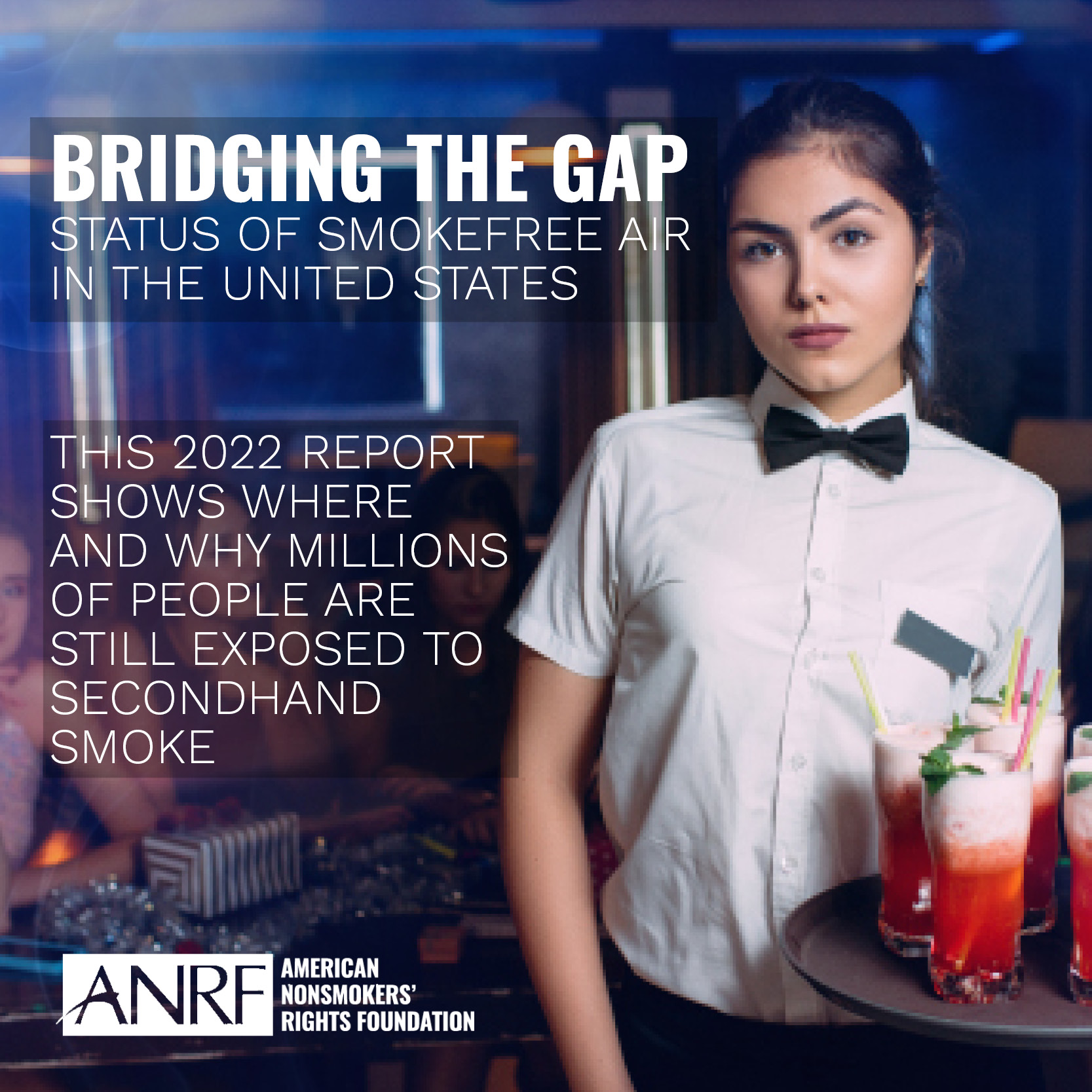Status of Smokefree Air in the United States
We’re proud to announce our 2022 update of the “Bridging the Gap: Status of Smokefree Air in the United States” report. This 2022 edition added five more state-specific highlights for a total of 17 state reports, and updates current smokefree protections and policy trends across the United States to pinpoint where we are failing to live up to our commitment to protect everyone equally. In particular, the report highlights places that lack laws that ensure smokefree air, a vital condition for health, and shows which people are least likely to be protected.
The 2022 update of this report focuses on seventeen states, which ANR Foundation sees as critical places to rebuild momentum for smokefree air policies. By understanding the policy options and contexts in these states, and by supporting and learning from advocates’ efforts to create change, advocates for public health and health equity can continue to make progress.
It’s time to close the gaps in smokefree protections.
Residents in Southern and Midwestern states tend to have the fewest smokefree laws and therefore the greatest exposure to secondhand smoke along with some of the highest smoking rates. The seventeen states that deserve special attention are:
Alabama, Alaska, Arkansas, Georgia, Indiana, Kentucky, Louisiana, Mississippi, Missouri, Nevada, New Jersey, North Carolina, Oklahoma, Pennsylvania, Tennessee, Texas, and West Virginia.
NONE of these states currently have a statewide smokefree law covering workplaces, restaurants, bars and gaming. Thirteen of the states have local authority to adopt smokefree laws, and four (Oklahoma, Pennsylvania, North Carolina, and Tennessee) preempt or partially preempt local lawmaking regarding smokefree air. Preemption occurs when a law passed by a higher level of government takes precedence over a law passed by a lower one. Preemption is a key tobacco industry tactic that removes a community’s right to enact local smokefree air laws.
Many Americans today take smokefree protections for granted—at home, at work, at school, or in public places they typically visit such as restaurants. They may assume that everyone else in the community is also protected and that secondhand smoke is a problem that has been solved.
However, nearly 38% of Americans live in a place that is still not fully protected by a 100% smokefree law. In many jurisdictions, certain types of businesses are exempt from smokefree regulations. Most often, these are businesses that rely on manual laborers, like farms or factories, or hospitality businesses, like restaurants, bars, and casinos. By making white-collar workplaces smokefree while allowing blue-collar workplaces to continue to expose people to dangerous air, our current policies are widening inequalities in health.
This report aims to:
• Increase awareness of the ongoing problem of secondhand smoke exposure from tobacco and cannabis/marijuana products.
• Highlight the drastic gaps in smokefree protections and the physical and fiscal health consequences that follow.
• Encourage public health and social justice advocates and professionals to prioritize smokefree policy development to protect and improve the health and safety of all workers and patrons.
• Highlight the impact direct advocacy from affected individuals such as casino workers and musicians to make policy change in their states and localities.
• Offer strategic advice to increase civic engagement as well as build public support to close smokefree gaps and improve community health.
Read the report here: smokefreegaps.org
Individual state pages:
Alabama, Alaska, Arkansas, Georgia, Indiana, Kentucky, Louisiana, Mississippi, Missouri, Nevada, New Jersey, North Carolina, Oklahoma, Pennsylvania, Tennessee, Texas, and West Virginia






